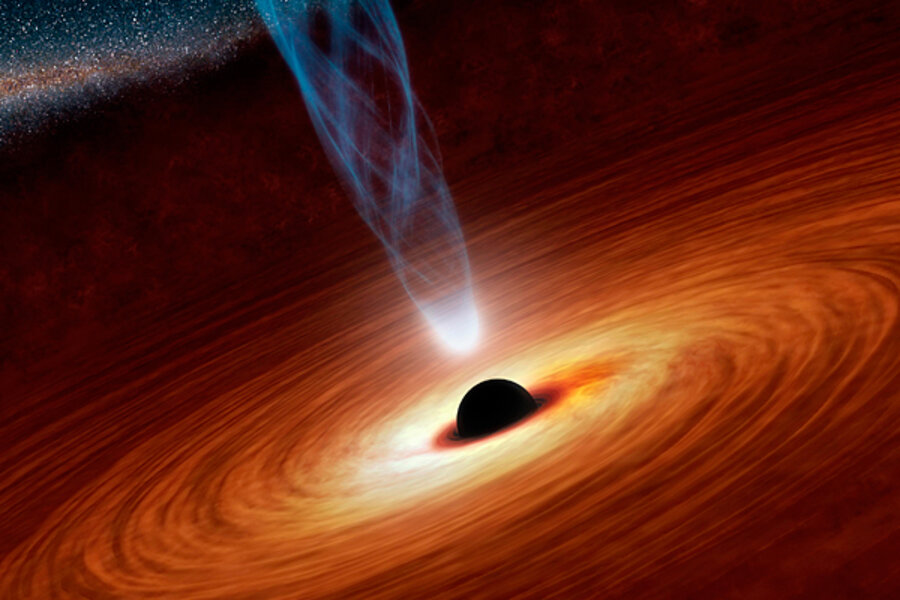Hairy black holes?! Black holes might be distinguishable from one another, say scientists.
Black holes are a spot in the universe where you won’t see the sun shine in, to paraphrase that 1960s rock-musical Hair. But speaking of “hair”, a group of scientists says these singularities may have matter (sometimes referred to as “hair”) that could affect how they appear.
This is a tangled concept to figure out (so to speak), so let’s unpack what the new study in Physical Review Letters means.
When black hole understanding was still in its infancy in the scientific literature, physicist John Wheeler wrote a phrase that is now famous among scientists in that field: “Black holes have no hair.” His phrase referred to how black holes are defined, which he believed came down to only two factors: their mass, and their angular momentum, or the rotation velocity of the hole. (Some sources also say electric charge was included as a third factor.)
Say you have a black hole that was created out of a huge star that imploded. Even though the star itself had distinctive properties, this theory says they would vanish in a black hole. So to take that to a generality, Wheeler’s phrase said all black holes are essentially the same.
This understanding of black holes dates back to 1963, arising back to a “clean” black hole model first published by Roy Kerr. The new study agrees that Kerr’s work from 50 years ago works with general relativity, a theory from Einstein that (in very simple terms) says the laws of nature are consistent throughout the universe. (More at this past Universe Today article.) As the theory pertains to black holes, strong sources of gravity bend space and time.
Kerr’s theory, however, does not agree with extensions of Einstein’s work, the scientists said. These extensions are known as scalar-tensor theories and there are several variations on this topic. The physics deals with the interactions between two different types of fields, scalar and tensor. Scalar fields, according to this Massachusetts Institute of Technology paper, assign values for every point of space observed. (Think a temperature map of Mars). Tensor fields measure these variables with relation to each other.
The science team included Thomas Sotiriou, a physicist at the International School for Advanced Studies in Italy.
His team, Sotiriou said in a statement, “focused on the matter that normally surrounds realistic black holes, those observed by astrophysicists. This matter forces the pure and simple black hole hypothesized by Kerr to develop a new ‘charge’ (the hair, as we call it) which anchors it to the surrounding matter, and probably to the entire universe.
“According to our calculations,” he added, “the growth of the black hole’s hair is accompanied by the emission of distinctive gravitational waves.”
This model hasn’t been proved yet in by measurements, so this will be something for astronomical instruments to watch for in the coming decades. It also should be noted that other scientists have found different problems with the clean black-hole theory, which you can check out if you’re so inclined.
In the meantime, you can read the new study at this link. There is also a prepublished version available.
Source: Scuola Internzaionale Superiore di Studi Avanzati
Originally published on Universe Today.
Want to stay on top of all the space news? Follow @universetoday on Twitter
Elizabeth Howell (M.Sc. Space Studies '12) is an award-winning freelance space journalist living in Ottawa, Canada. She reported on three shuttle launches, including the first launch "tweetup" during STS-129. Besides Universe Today, she regularly writes for SPACE.com, the Space Exploration Network and All About Space, among other publications. You can follow her on Twitter @howellspace or contact her at her website.






